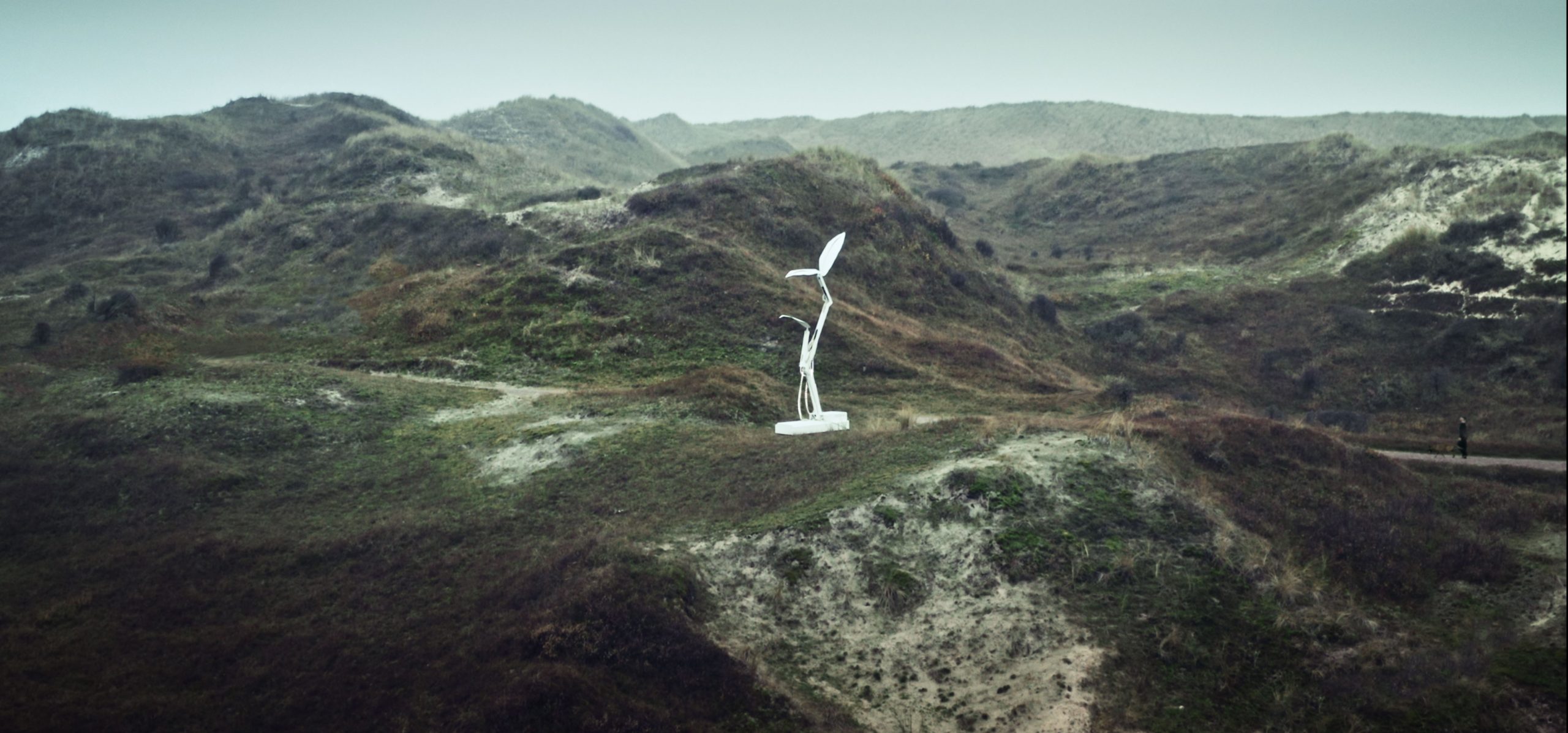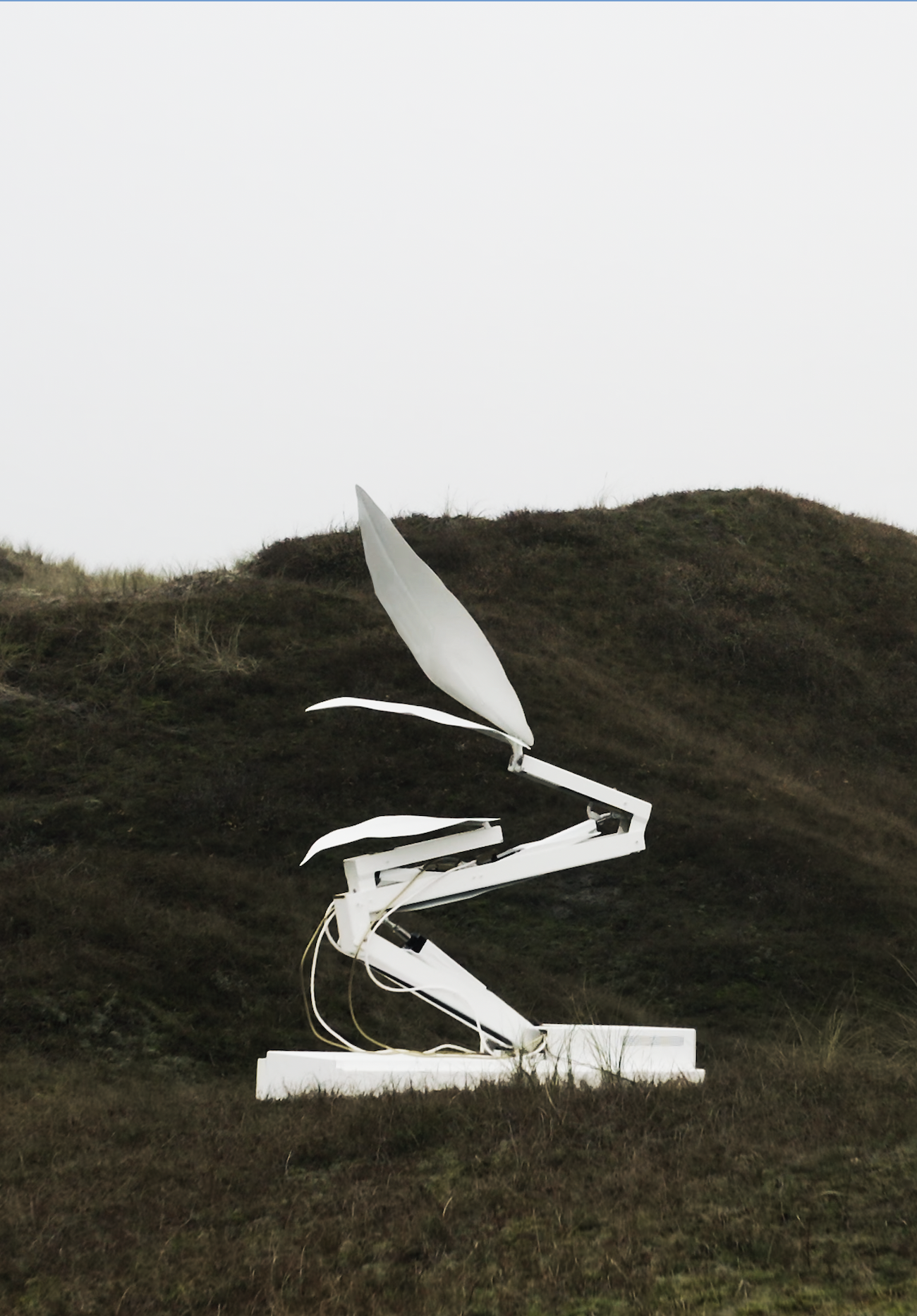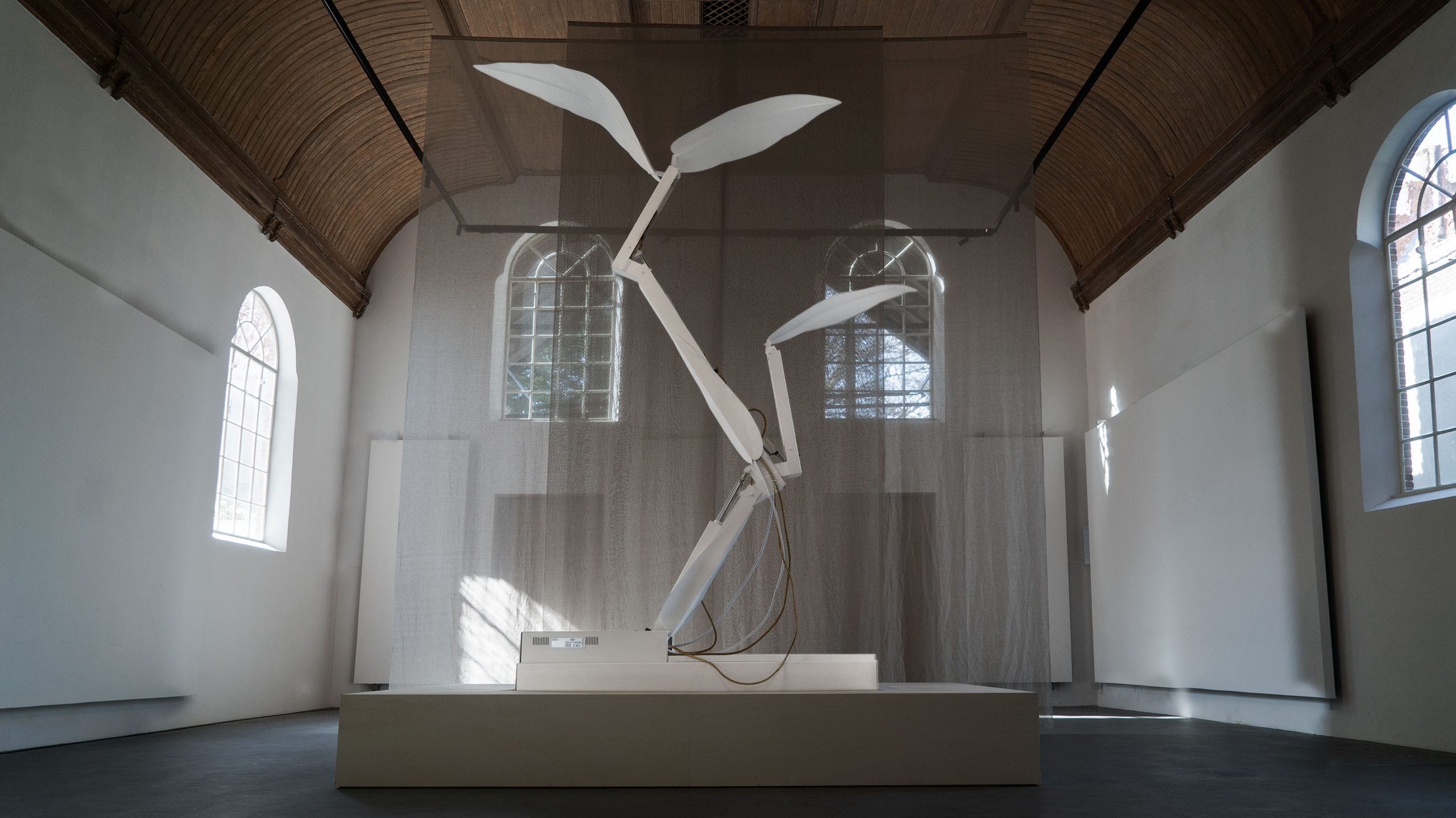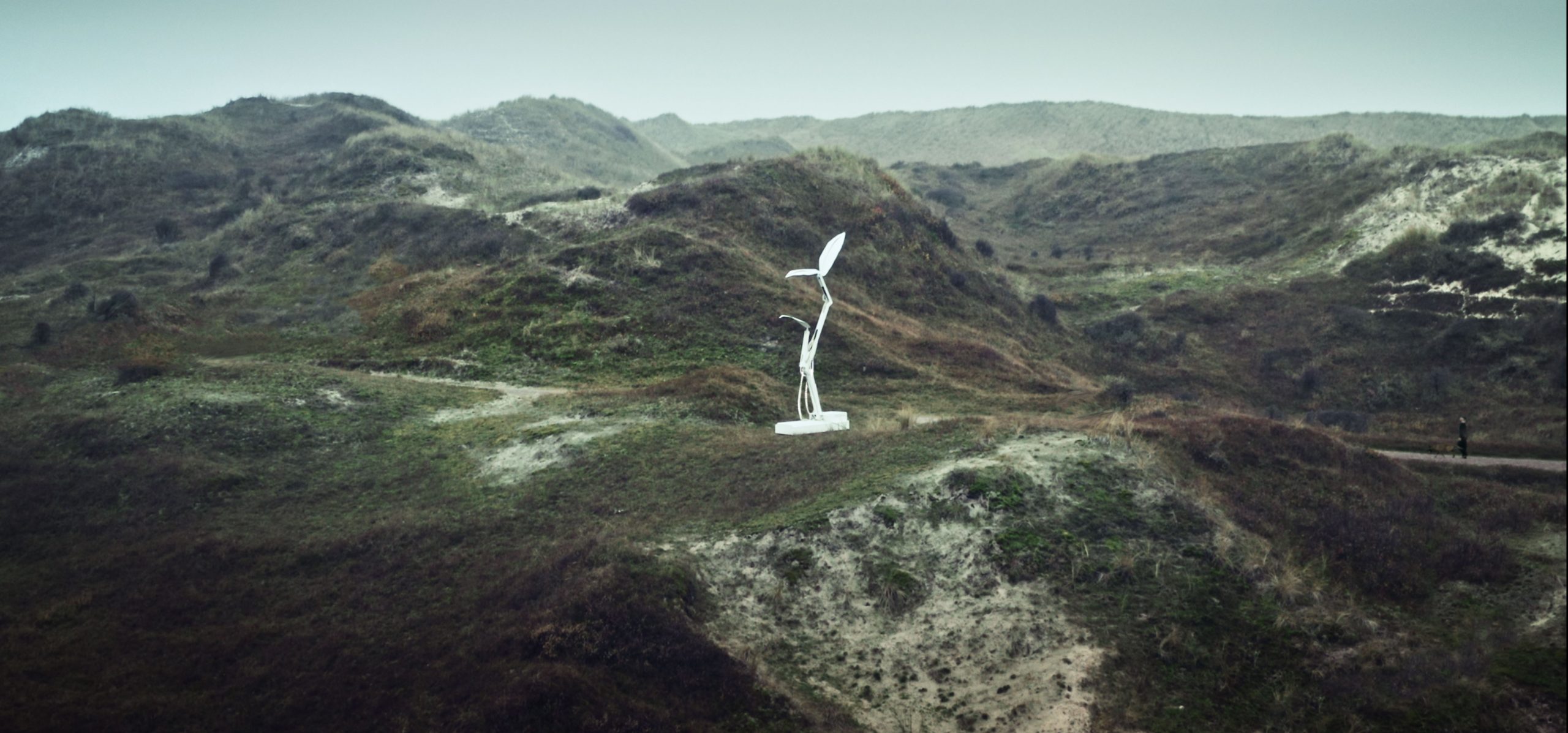





Client
Location: amsterdam, Netherlands
Completion date: 2022
Project Team
artist
Thijs BIersteker
Woven studio
Data science
NHM
Natural History Museum
Overview
This robotic plant shows how your political choices today, impact biodiversity tomorrow.
Ecological artist Thijs Biersteker has created a 5-meter-tall robotic plant, growing on biodiversity prediction data from the Natural History Museum. Creating a (literally) moving monument to the importance of the political choices we are making now for the future of our planet. The artwork ‘Econario’ provides a powerful representation of how choices society makes today will affect the state of nature over the next thirty years. Visitors see the impact of a nationalistic American government, unequal Dutch society, or a just-ignore-everything Chinese politics on the biodiversity of 2050.
The work is moving like a small fragile seedling finding its way up. The robotic plant is growing, not with the help of nutrients, but driven by data from the Biodiversity Intactness Index (BII) developed by the Natural History Museum. A dataset that shows the future of biodiversity based on our political choices. When the artwork is folded the plant has an industrial look, but when the biodiversity increases and the work unfolds the plant-like motion gives the work an organic feel.
Goals
As the artwork switches between countries, it is showing the biodiversity intactness in 2050 based on 5 different political scenarios we as a society can choose today.
For example, when the Netherlands will choose a sustainable scenario, the artwork grows towards its full 5 meters length. However, a scenario with a government that keeps burning fossil fuels like it’s 2022, will make the artwork decline rapidly. Showing visitors the 2050 scenario of an on equality based society in America, to a nationalistic government in Denmark which surprisingly increases the biodiversity.
The artwork makes distant data personal by featuring data from the location where the work is being exhibited. It is showing us a choice in a time when we still have a choice. Giving us a path to change in a time of climate change.
Additional Information
The plantanoid work visualises the future worlds we all have a stake in choosing and it also provokes an emotional response. Or as a biologist visiting Woven Studio said; “please can I spend some time alone with the work? I don't understand how I can feel the same empathy for a robot as I do for the plants I work with every day as a biologist.” Quotes: Thijs Biersteker, ecological artist says: “This work is important at this moment in time. Knowing all the data it’s still hard to imagine what the future could look like these days. This work shows how woven our environmental choices of today are with that of our future. With the help of the BII data from the Natural history Museum, we can provide and provoke a small glimpse of those futures, even a small slice of hope if we choose the right path.” Professor Andy Purvis, biodiversity researcher at the Natural History Museum says: “I am blown away by this piece. The numbers around biodiversity loss are cold hard facts, but cold hard facts never grabbed anyone by the heart. With ‘Econario’, you feel joy when it grows and becomes more natural; and you feel pain when it wilts. It has soul. And it really brings home what’s at stake.” Doctor Adriana De Palma, researcher at Natural History Museum says: “Biodiversity loss is a threat to no